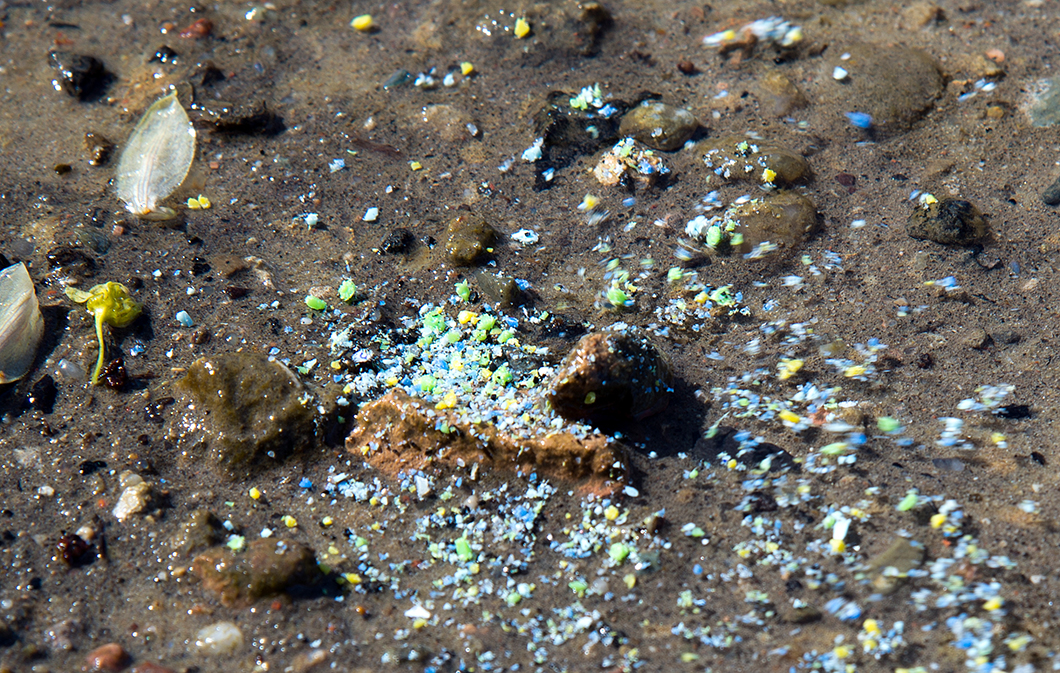
Microplastics in the environment
Source: BAM
Small plastic particles, also known as microplastics, which range in size from one micrometer to five millimeters, have meanwhile been found in waters, soils, organisms and even in the air. Nevertheless, the detection and determination of the material and an estimation of the amount of these microplastic particles present is still time-consuming and costly. A comprehensive characterization of the type, size, and shape of microplastics is only possible using extensive micro-spectroscopic methods. If the focus is more on the mass content of the plastics than on the particles, thermoanalytical methods such as pyrolysis-gas chromatography-mass spectrometry (Py-GC/MS) or thermal extraction desorption gas chromatography mass spectrometry (TED-GC-MS) are very precise. In these approaches, however, only small samples can be analyzed, and the methods are tied to the purchase of expensive equipment and highly skilled personnel. Therefore, there is a need to obtain at least an overview of possible contamination with microplastics by means of rapid and inexpensive analytical methods. Here we present a method that combines an enrichment and measurement procedure for microplastics in compost in a realistic concentration range. It allows finding microplastics and determining the material at the same time. For this study, small particles less than 1 mm in diameter of polyethylene (PE), polypropylene (PP), and polystyrene (PS) plastics found in common packaging and disposable materials were used. Using the method developed here, we succeeded in detecting microplastic levels about ten times lower than in previous studies using near-infrared (NIR) spectroscopy, in which no additional enrichment was employed. Furthermore, we could show that this method is not only possible with expensive laboratory equipment but can already be realized with some of the cheapest and smallest NIR spectrometers, which are hardly bigger than a 50 cent coin.

From compost sample to microplastic content
Source: BAM
Development of a Low-Cost Method for Quantifying Microplastics in Soils and Compost Using Near-Infrared Spectroscopy
Lukas Wander, Lukas Lommel, Ulrike Braun, Klas Meyer, Andrea Paul
published in Measurement Science and Technology, Vol. 33, issue 7, pages 1-13, 2022.
BAM Analytical Chemistry; Reference Materials Process Analytical Technology division


